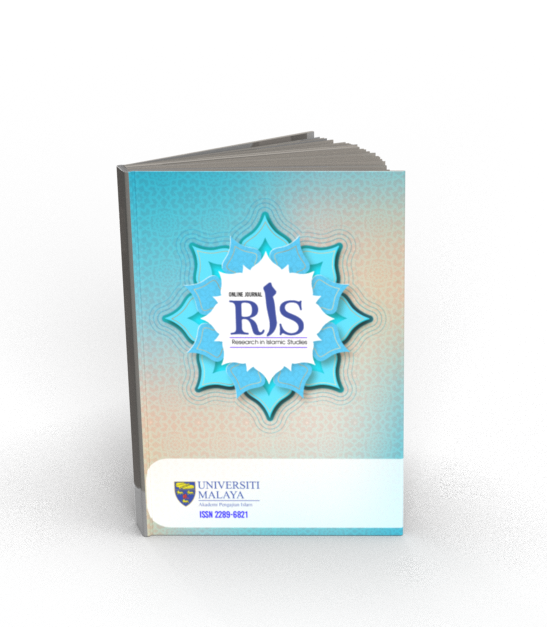Main Article Content
Abstract
يتناول هذا البحث ظاهرة النشر المتكرر للبحث العلمي في ضوء السُّنَّة النبويَّة، حيث تكمن مشكلة البحث في تزايد حالات نشر البحث الواحد في أكثر من مجلة علمية دون إعلام، وما يترتب على ذلك من إشكالات منهجية وأخلاقية. اعتمد البحث على المنهج التأصيلي الاستقرائي التحليلي من خلال استقراء النصوص الشرعية المتعلقة بالتدليس في الحديث النبوي وتحليلها، ثم استنباط المعايير المعاصرة لضبط النشر العلمي. توصل البحث إلى أن تكرار نشر البحث دون الإفصاح عن النشر السابق يندرج تحت مفهوم التدليس المنهي عنه في السُّنَّة النبويَّة، وأنه يتنافى مع مبادئ الأمانة العلمية. كما كشف البحث عن التشابه المنهجي بين علة التدليس عند المحدثين وإشكالية النشر المتكرر في العصر الحاضر، حيث تشترك الصورتان في إخفاء معلومات جوهرية عن المتلقي، مما يؤثر في قراره وحكمه على المادة العلمية. وقدم البحث خمسة معايير مستنبطة من منهجية المحدثين لضبط النشر العلمي، هي: التوثيق المؤسسي الموحد، والإفصاح والشفافية، والرقابة التقنية، والمساءلة والمحاسبة، والتوعية المجتمعية والتأهيل العلمي. يوصي البحث بتطبيق هذه المعايير في المؤسسات الأكاديمية المعاصرة، وإنشاء قاعدة بيانات موحدة للأبحاث المنشورة على مستوى العالم العربي والإسلامي لمنع تكرار النشر، وتعزيز الوعي المجتمعي بخطورة هذه الظاهرة وآثارها السلبية على مصداقية البحث العلمي ومكانة المؤسسات الأكاديمية
الكلمات المفتاحية: النشر المتَكَرِّر، السُّنَّة النبويَّة، التدليس العلمي، الأمانة العلمية، معايير النشر العلمي
ABSTRACT
This research addresses the phenomenon of repeated publication of scientific research in light of the Prophetic Traditions (Sunnah). The research problem lies in the increasing cases of publishing the same research in multiple scientific journals without disclosure, resulting in methodological and ethical issues. The study adopted an inductive-analytical foundational approach by examining religious texts related to misrepresentation (tadlees) in Prophetic Hadith and analyzing them, then deriving contemporary standards to regulate scientific publication. The study concluded that repeated publication without disclosing previous publication falls under the concept of misrepresentation (tadlees) prohibited in the Prophetic Traditions, which contradicts the principles of scientific integrity. The research also revealed methodological similarities between the reasoning behind misrepresentation in Hadith scholarship and the issue of repeated publication in the modern era, as both involve concealing essential information from recipients, affecting their judgment of the scientific material. The study presented five standards derived from Hadith scholars' methodology to regulate scientific publication: unified institutional documentation, disclosure and transparency, technical supervision, accountability, and community awareness and scientific qualification. The research recommends applying these standards in contemporary academic institutions, establishing a unified database for published research across the Arab and Islamic world to prevent repeated publication, and raising community awareness about the dangers of this phenomenon and its negative impacts on the credibility of scientific research and the status of academic institutions.
Keywords: Repeated Publication, Prophetic Traditions (Sunnah), Scientific Misrepresentation, Scientific Integrity, Scientific Publication Standards.
Keywords
Article Details
Copyright (c) 2025 Online Journal of Research in Islamic Studies

This work is licensed under a Creative Commons Attribution-NonCommercial 4.0 International License.
Copyright Notice
By submitting manuscripts to the Online Journal of Research in Islamic Studies (RIS), authors agree to transfer copyright to the journal. However, authors may republish their work or grant others permission to republish it; in which case it should be accompanied by a proper acknowledgment that the work was originally published in the Online Journal of Research in Islamic Studies (RIS). The journal adopt CC-BY-NC licence which authors may also share and distribute their article anywhere of non-commercial website, social media and repositories immediately on publication.
Authors may also reuse the Abstract and Citation information (e.g. Title, Author name, Publication dates) of their article anywhere at any time including social media such as Facebook, blogs and Twitter, providing that where possible a link is included back to the article on the journal site.
